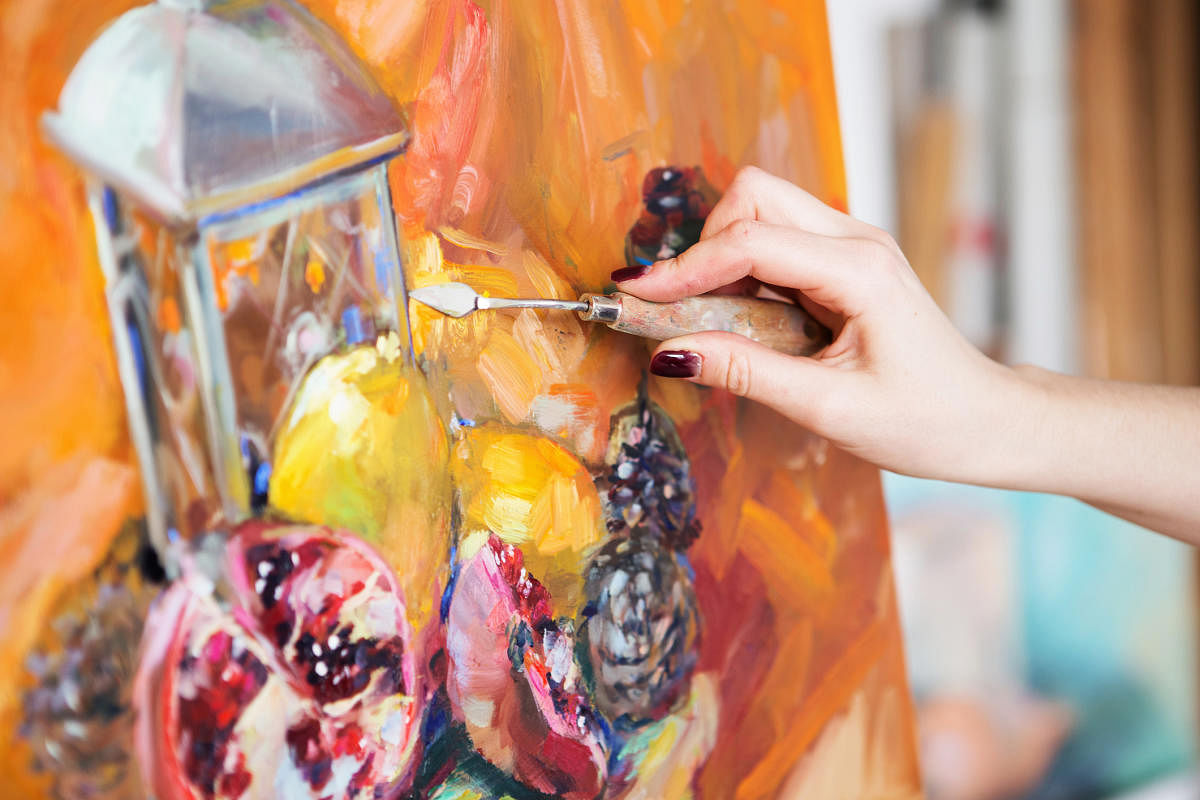
Most office spaces have been closed for almost a year and have been operating at minimum capacity, even when they opened temporarily, during the easing of restrictions. Once lockdowns ease, it would be a good time to examine art collections on display in corporate and commercial spaces, and assess them for any signs of damage and disrepair.
In closed rooms and environs, when air-conditioning units have been either completely switched off or have been functioning at minimum levels, it is possible that the condition of the artworks inside the buildings could require care.
It is probable that due to excessive moisture, direct sunlight, piling up of dust, warm conditions and lack of air circulation, artworks might be adversely affected. It is therefore important to take stock of your art, both displayed indoors and also those in open spaces.
Detecting early signs
In general, when offices and commercial spaces are functional, it is easier to spot any obvious signs of damage, even if it is minor. At the time, most HVAC (Heating, Ventilating and Air Conditioning) systems in commercial buildings operate at optimal levels, although these are aimed towards human comfort rather than towards art preservation. Still, these are better for art conservation when compared to natural environment conditions. The last year has been disruptive in several ways and it is very possible that artworks may have suffered and have started to show early signs of deterioration, which should be assessed, and restored, if any such need is identified.
Ideally, due precautions and appropriate maintenance should be made for periods requiring shutdowns of premises, but most likely this would have been difficult to plan and implement for such an extended period. Temperature, sunlight, humidity, dust and air quality are some of the factors that have an impact on almost all forms of artworks.
Very few art pieces will be resistant to prolonged exposure to natural and extreme weather elements and to dark, dusty rooms with temperature and moisture fluctuations. Fading of colours, incidence of patches, mould spots, warping and oxidisation of metal parts, are some of the possible damages that can be hastened when artworks are put up in suboptimal conditions.
Right from the surface of the artwork, the back of it, and framing mounts and supports, a thorough and professional physical evaluation must be carried out. It is also important to check the fixtures used for hanging, pedestals for displaying and any other hardware that is in use.
In normal circumstances too, such assessments should be undertaken on a regular basis.
It is best to have a physical inspection and assessment by a conservator, which will ensure a condition check and will also guide you in any restoration or conservation effort that might be required.
The author is a Bangalore-based art consultant, curator and writer. She blogs at Art Scene India and can be reached on artsceneinfo@gmail.com
Dab Hand is your fortnightly art world low-down.